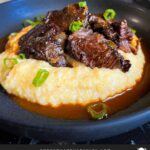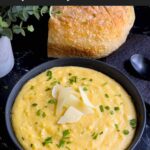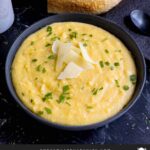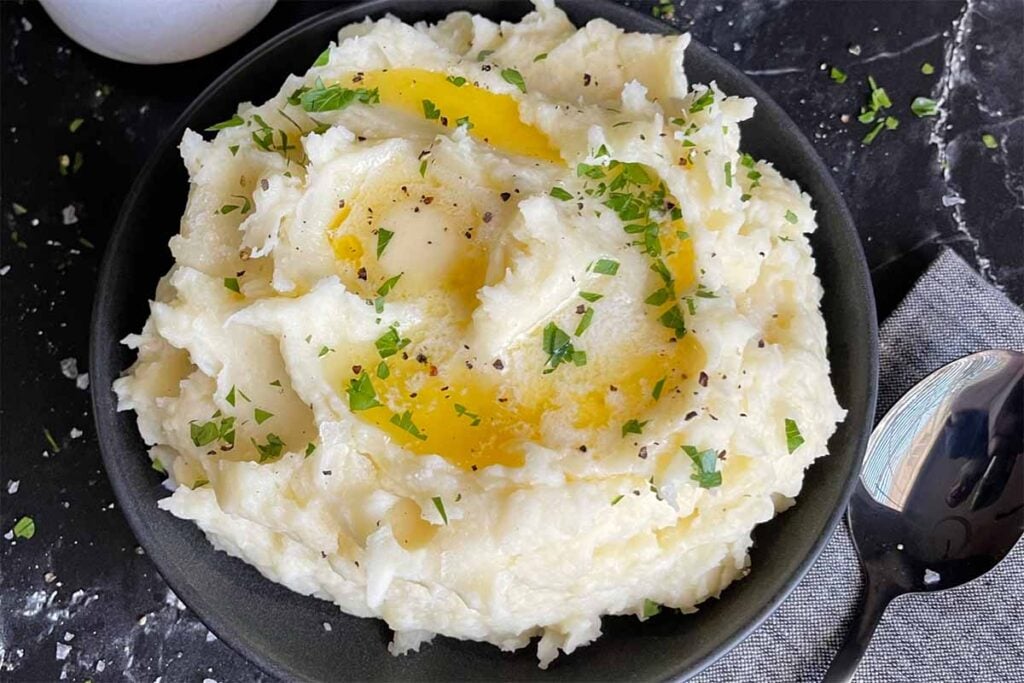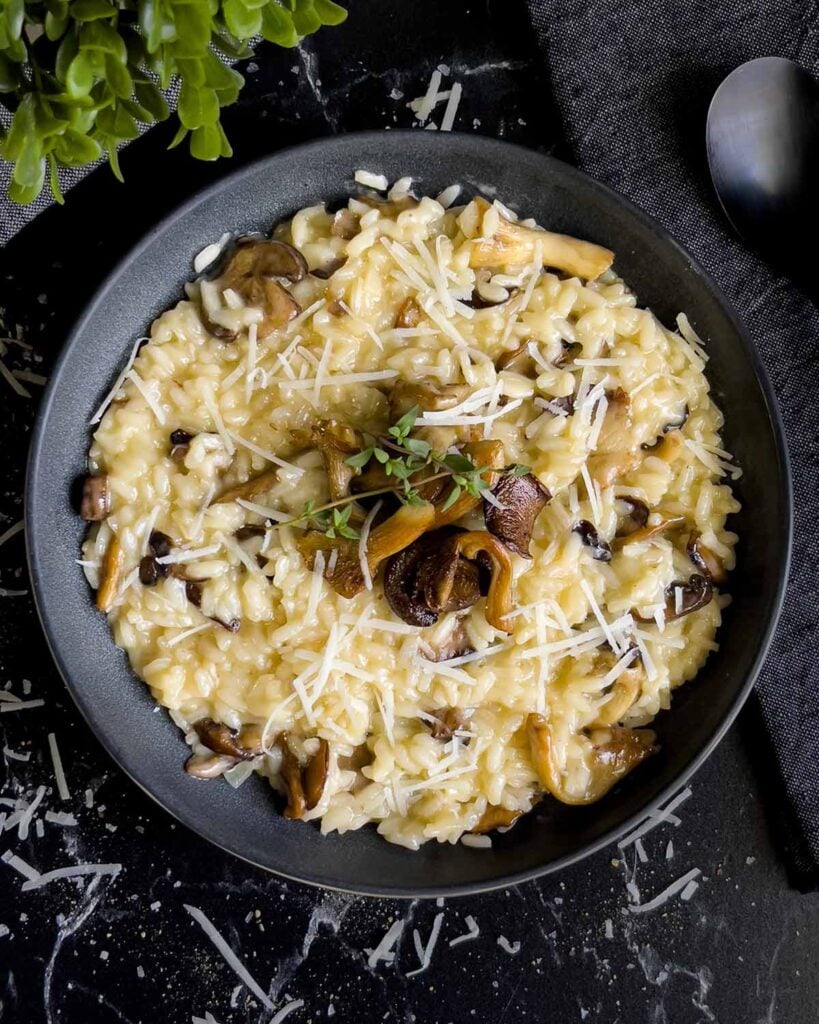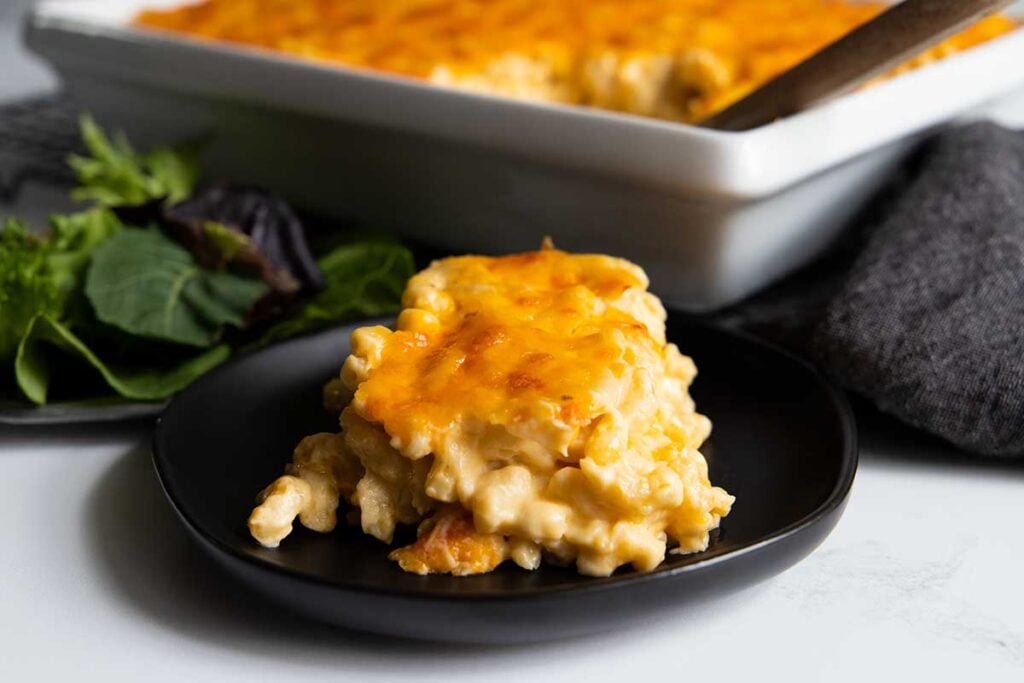How To Make An Easy Creamy Basic Polenta
Creamy Polenta is a versatile and delightful dish that shines both as a satisfying main course or a perfect side. This traditional Italian dish offers a velvety texture and a comforting taste that can elevate any meal.
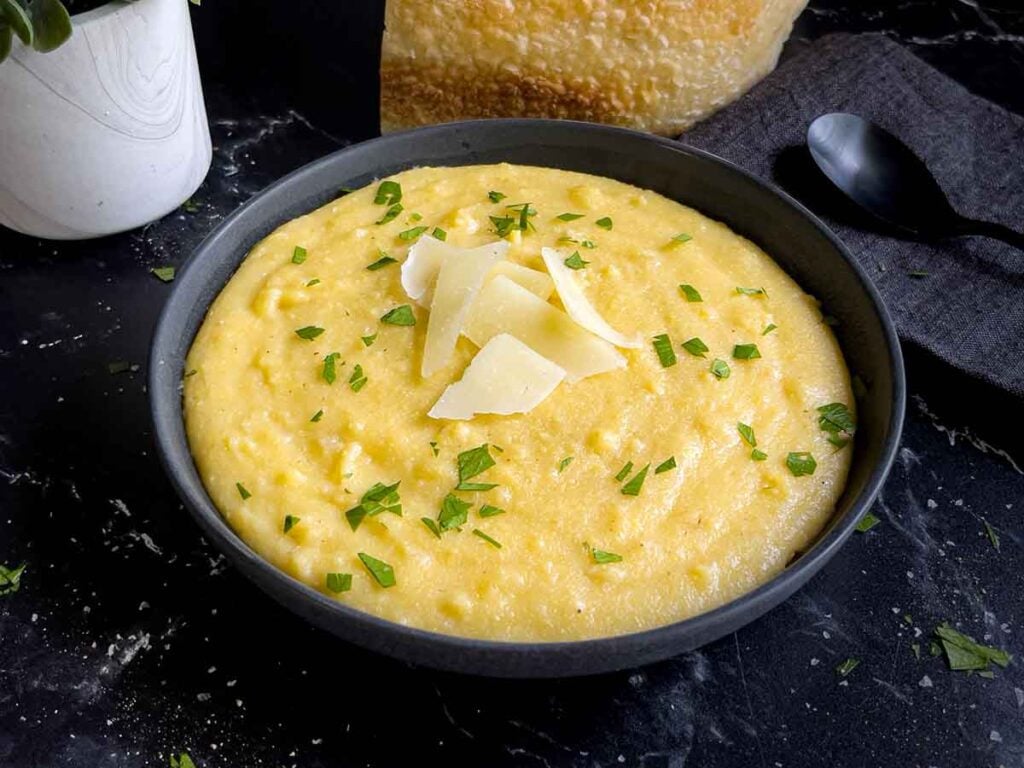
Why You Will Love This Recipe
You’re gonna love the delightful sweet corn flavor with this simple polenta recipe. It’s a basic yet flavorful and satisfying dish that highlights the essence of corn.
With just a few ingredients and straightforward steps, this dish is perfect for those seeking a fuss-free and delicious meal.
We have eaten as-is, but it also makes a great side dish, especially rich dishes, like our amazing braised beef cheeks (so damn good!).
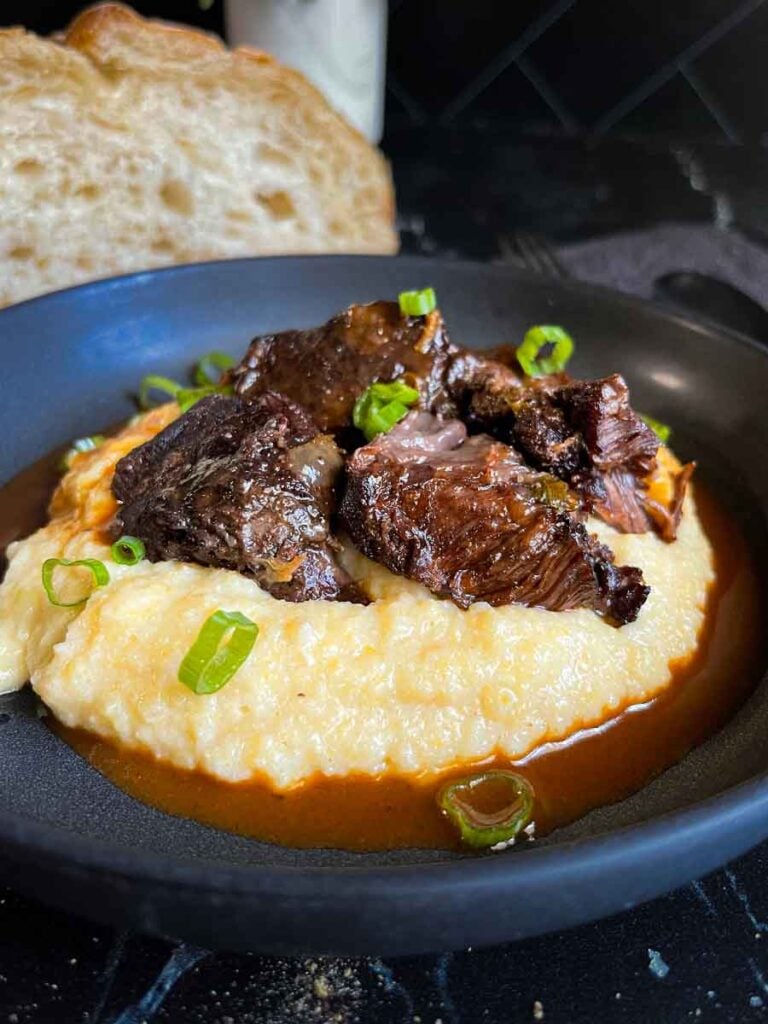
Enjoy the simplicity and let the sweet corn flavor shine through in every bite.
What’s The Difference Between Polenta And Grits?
Polenta and grits, while similar in appearance, have distinct characteristics and are associated with different culinary traditions.
Polenta is a traditional northern Italian dish made by cooking coarse cornmeal with water or stock until it reaches a creamy consistency. It has been a staple in northern Italy for centuries, particularly in regions like Lombardy, Piedmont, and Veneto.
It is often served as a side dish or used as a base for various toppings, such as ragù or grilled vegetables.
On the other hand, grits are a classic dish originating from the Southern United States. They are made by boiling ground cornmeal, typically a fine cornmeal variety that is used for polenta, in water or milk until it becomes thick and porridge-like.
Grits have a long history in Southern cuisine and are often enjoyed as a breakfast dish, accompanied by butter, cheese, or savory additions like shrimp or bacon.
The main difference between polenta and grits lies in the type of cornmeal used and the regional culinary traditions associated with them.
Polenta is typically made with coarser cornmeal and is deeply rooted in Italian cuisine, while grits are made with finer cornmeal and are a beloved component of Southern American cooking.
Polenta is traditionally made with coarsely ground yellow cornmeal. The coarse texture of the cornmeal gives polenta its characteristic grainy and hearty consistency.
Grits, on the other hand, are typically made with a finer grind of white cornmeal, often referred to as “hominy grits.” Hominy grits are made from dried corn kernels treated with an alkali solution, which helps remove the hull and gives the grits a distinct flavor and texture.
These variations in the grind and type of cornmeal used contribute to the contrasting textures and flavors of polenta and grits.
While polenta offers a coarser and more substantial mouthfeel, grits have a smoother and creamier consistency.
So, whether you’re enjoying the rustic charm of Italian polenta with its coarser cornmeal or savoring the creamy smoothness of Southern grits made from finer cornmeal, both dishes bring their own unique corn-based delights to the table.
Ingredients Needed
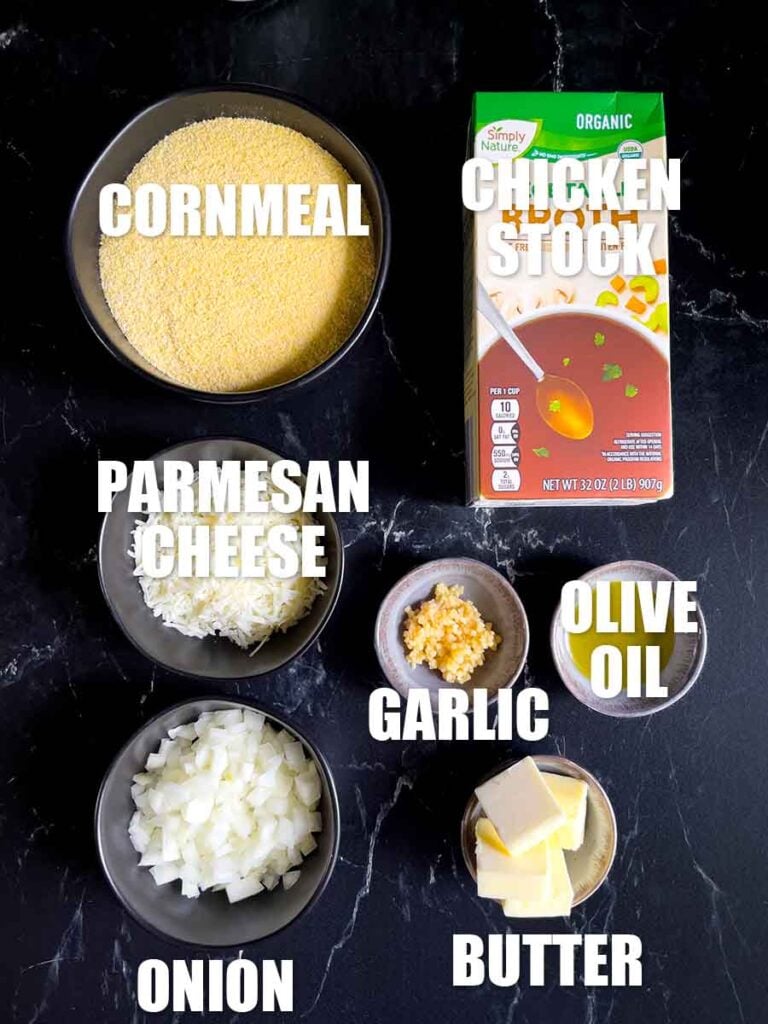
This makes a fabulous dish using hardly next to nothing. The ingredients are readily available and inexpensive, which makes this recipe a winner!
- Cornmeal: The star ingredient of creamy polenta. It provides a hearty and comforting corn flavor, giving the dish its signature taste and texture.
- Chicken stock: It infuses the polenta with savory notes and richness, creating a flavorful base that enhances the dish’s overall taste.
- Olive oil: Adds a subtle fruitiness and smoothness to the polenta while also helping to prevent clumping and providing a touch of richness.
- Onion: Sautéed until tender, the onion adds a delicate sweetness and depth of flavor, complementing the cornmeal and enhancing the overall taste profile.
- Garlic: Brings a bold and aromatic element to the polenta, elevating its taste with its distinct flavor and enhancing the overall savory notes.
- Parmesan cheese: Its nutty and tangy qualities contribute a luxurious creaminess and a delightful umami flavor that takes the polenta to new heights of deliciousness.
- Butter: Provides richness and a silky texture, adding a smooth mouthfeel and enhancing the overall indulgent nature of the dish.
- Salt and pepper: These seasonings are essential to balance the flavors, ensuring the polenta is perfectly seasoned and harmonizing all the other ingredients.
How To Make Creamy Polenta
Heat the olive oil in a large pot over medium to medium-high heat.
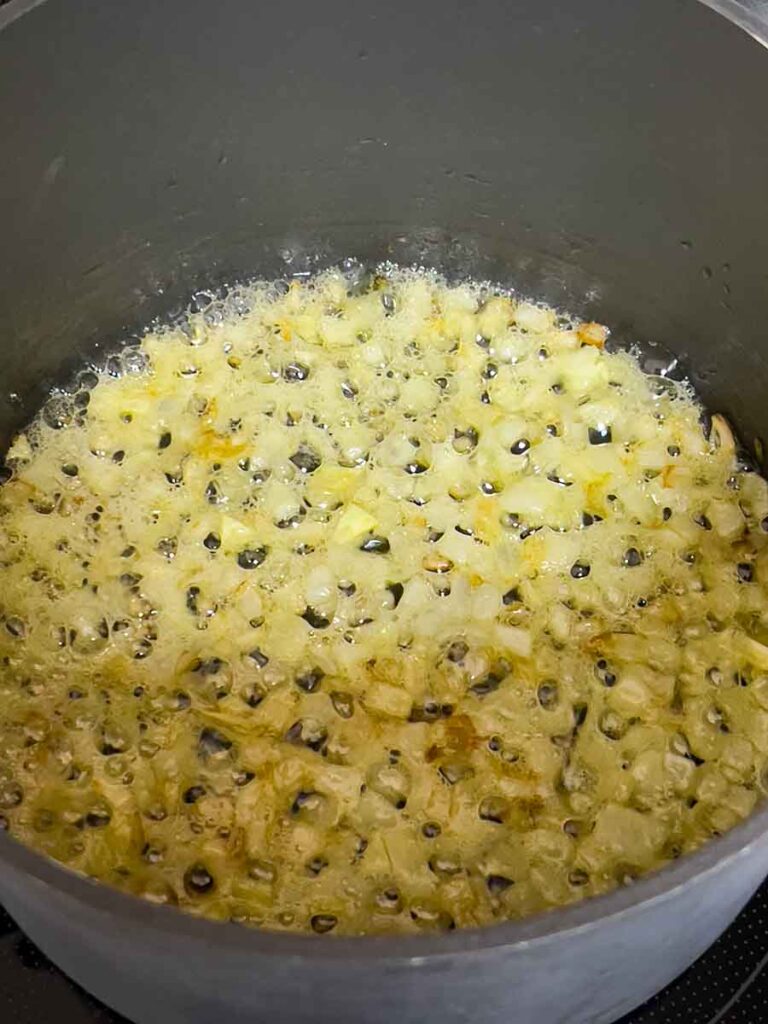
Once heated, add the diced onions to the pot and sauté until they start to turn translucent, about 5-7 minutes.
Maintain the heat so the onions do not burn but do start to brown along the edges.
Drop the heat to a medium-low and add the garlic. Continue to cook until the garlic becomes fragrant, about 1 minute.
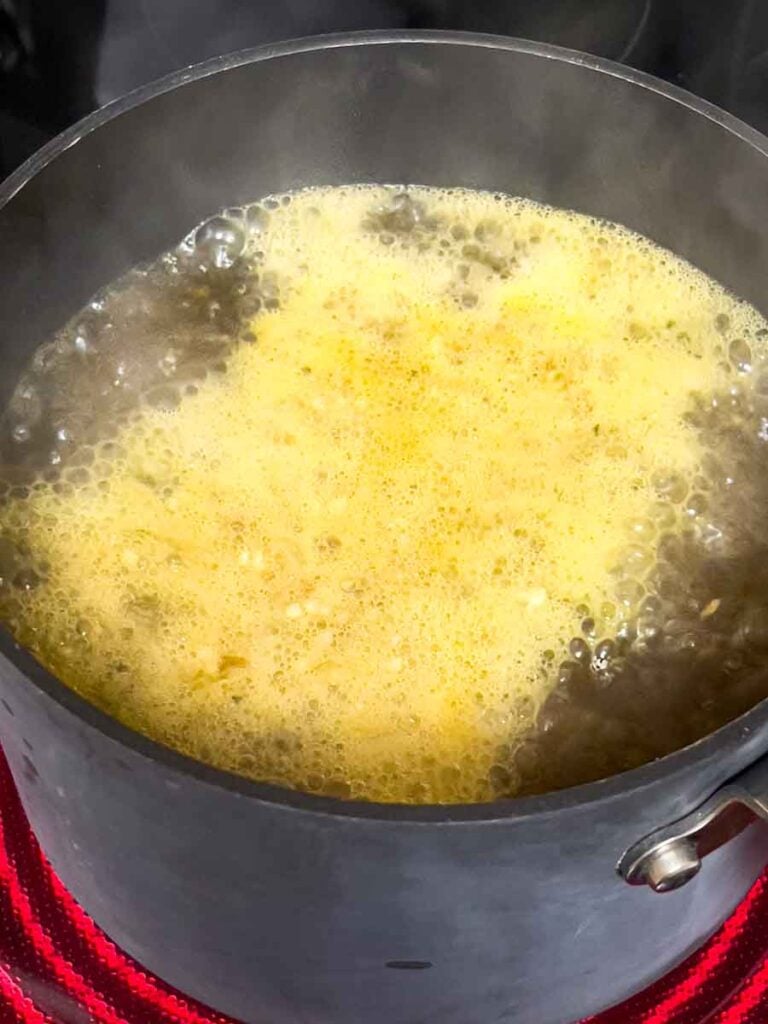
Add the chicken stock to the pot and increase the heat and bring the stock to a boil.
Pour the cornmeal in, whisking vigorously as you add the cornmeal. A vigorous whisk will prevent clumping.
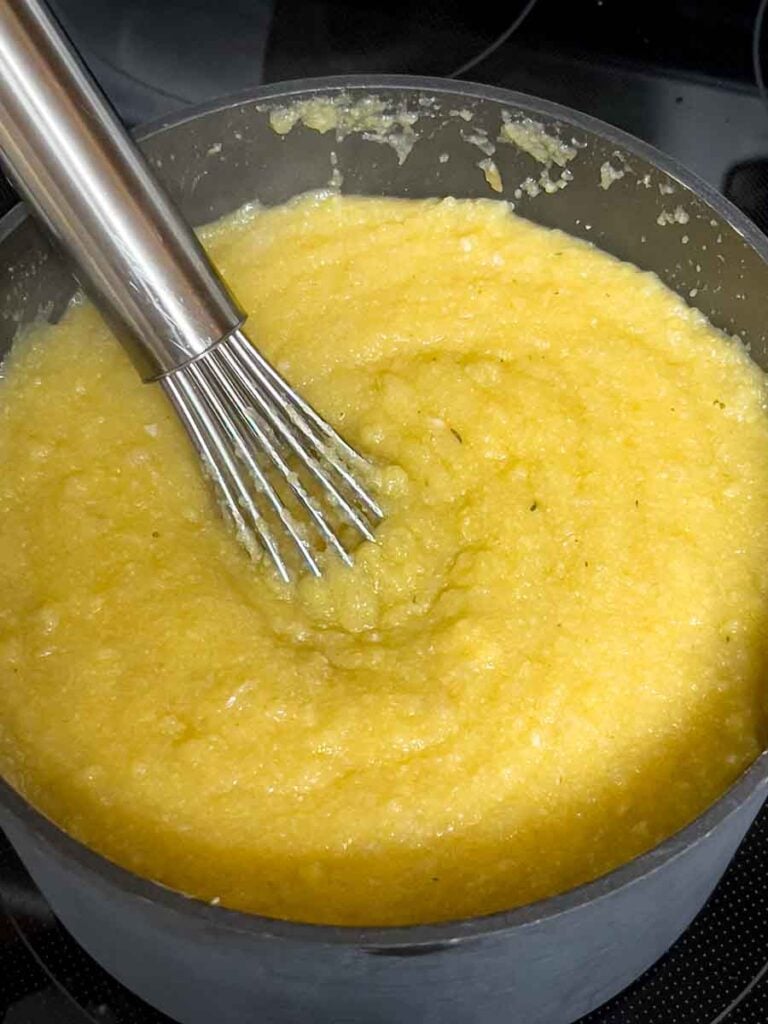
Drop the heat to medium-low and continue whisking to ensure that no clumps are forming.
Continue to cook on medium-low heat for 15 to 20 minutes, stirring occasionally (a wooden spoon is best).
Give them a taste to test for doneness. They should be creamy and have a smooth consistency.
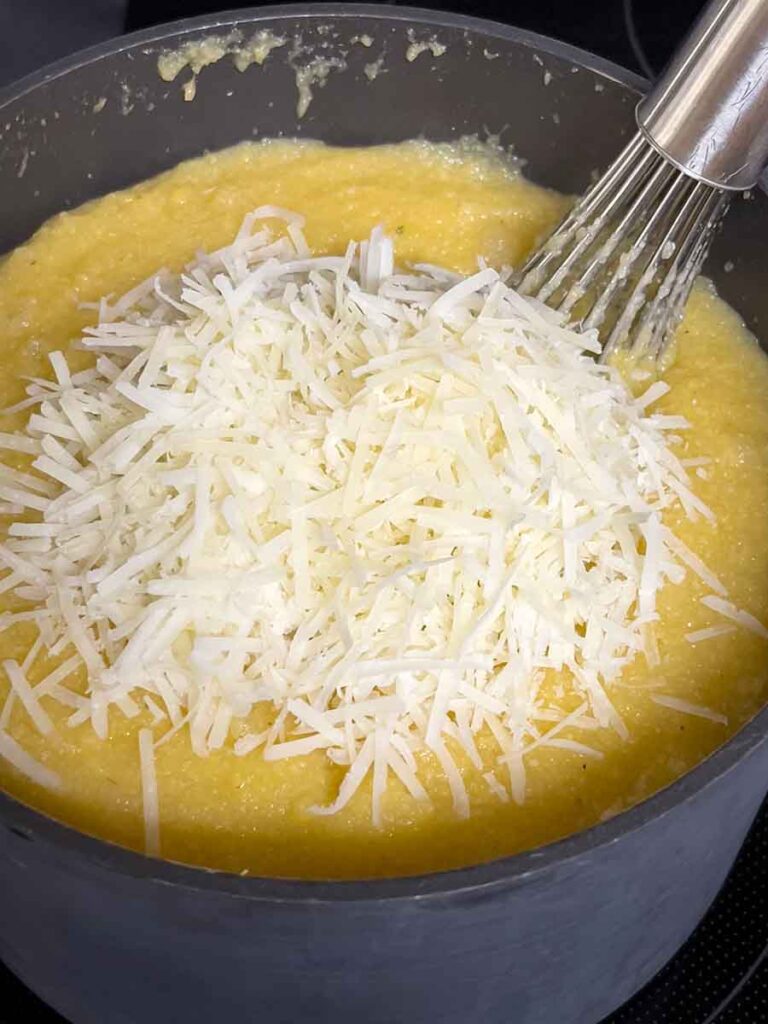
Next, add the parmesan cheese. Stir to incorporate fully.
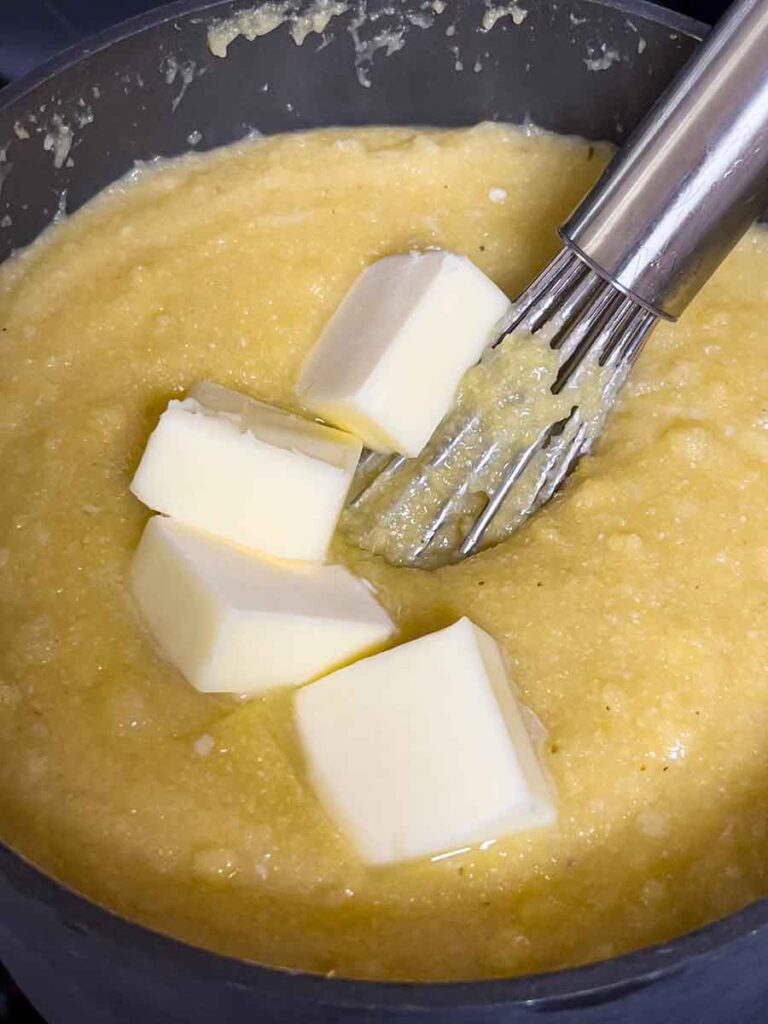
Once that is complete, add the butter and stir that in. Give it a taste and season with salt and black pepper to your preference.
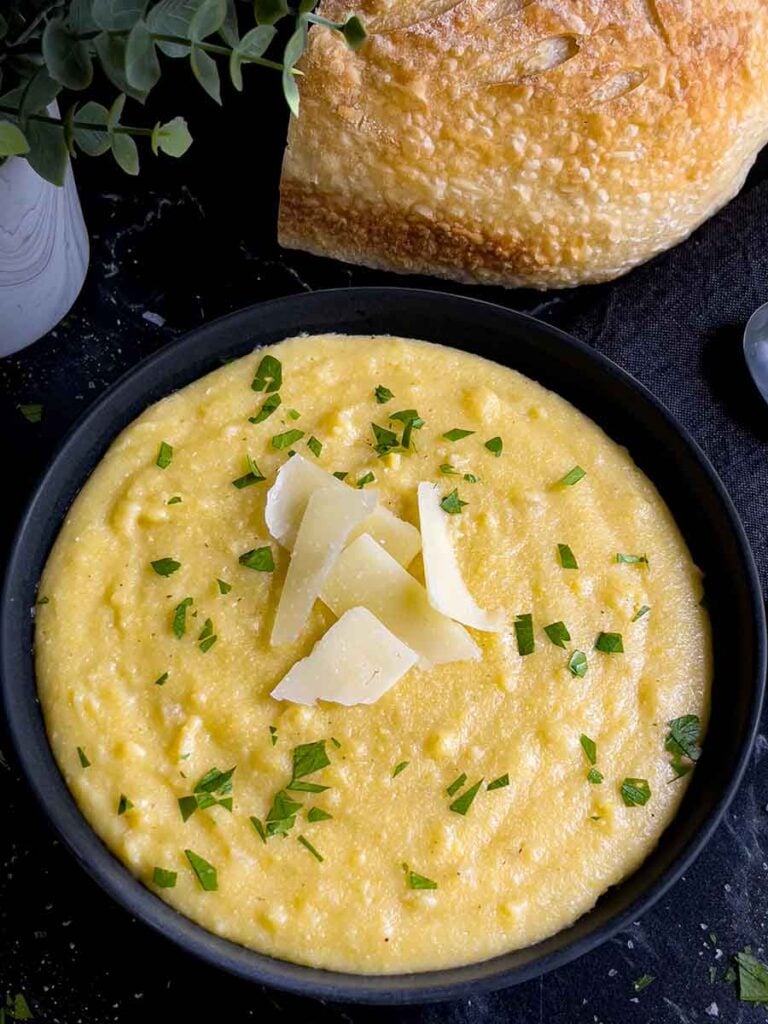
Once everything is fully incorporated, remove from the heat and serve hot. Garnish with some chopped parsley and parmesan cheese.
So easy and so good! This will be one of your favorites once you give it a go!
Tips And Variations
- This recipe makes a very nice and creamy polenta, but all tastes are different. If you find it too thick, add some warm stock, water, or milk to make them thinner. The best texture of polenta is your personal favorite.
- Gradually add the cornmeal. When incorporating the cornmeal into the liquid, it’s best to add it gradually while continuously whisking. This prevents lumps from forming and ensures a smooth and creamy consistency. Adding the cornmeal slowly allows it to absorb the liquid evenly, resulting in a well-incorporated and velvety polenta. This is the easiest way to get good results every time.
- Stir frequently. Polenta requires regular stirring throughout the cooking process to prevent it from sticking to the bottom of the pot and forming lumps. Stirring also helps in releasing the starches from the cornmeal, resulting in a creamier texture. Aim to stir it every few minutes to keep it smooth and lump-free.
- Herb-infused Polenta: Enhance the flavor of the polenta by adding fresh herbs. Along with the basic ingredients, incorporate a tablespoon of chopped fresh herbs such as rosemary, thyme, or sage during the cooking process. The herbs will infuse the dish with aromatic and earthy notes, elevating the overall taste.
- Creamy Mushroom Polenta: Prepare a savory mushroom topping to take your polenta to the next level. While it is cooking, sauté a mix of sliced mushrooms, such as cremini or shiitake, with garlic and butter. Season with salt and pepper and a splash of white wine optionally. Serve the creamy polenta with the flavorful mushroom mixture on top for a hearty and satisfying dish.
- Tomato and Basil Polenta: Create a tomato and basil variation for a burst of freshness and vibrant flavors. Add a tablespoon of tomato paste to the polenta while cooking and a handful of chopped fresh basil leaves. The tomato paste will lend a rich, umami taste, while the basil adds a delightful herbal note. Serve the polenta alongside roasted cherry tomatoes or a simple tomato sauce for a colorful and appetizing presentation.
FAQs
Polenta is typically made with coarser cornmeal and is deeply rooted in Italian cuisine, while grits are made with finer cornmeal and are a beloved component of Southern American cooking.
Polenta is made from cornmeal, but it is a specific preparation of cornmeal. Cornmeal is the raw ingredient, while polenta refers to the cooked dish made from cornmeal.
Quick-cooking polenta is a fine-grained variety that cooks faster compared to traditional coarser polenta. While it is convenient, it may result in a smoother texture. If you prefer a coarser texture, it’s best to use traditional polenta and allow for a longer cooking time.
Yes, you can reheat leftover polenta. It tends to firm up as it cools, so when reheating, you may need to add a little liquid, such as water or broth, and stir until it reaches a creamy consistency again. Reheating can be done on the stovetop or in the microwave.
Other Delicious Side Dishes
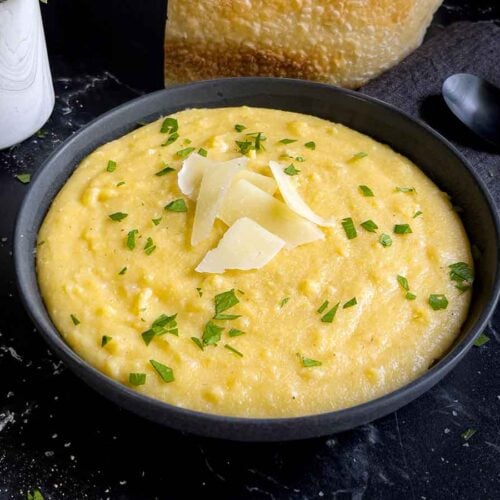
Creamy Polenta Recipe
Ingredients
- 2 cups Cornmeal
- 6 cups Chicken stock
- 1 tbsp Olive oil
- 1/2 cup Onion diced, appx. 1/2 onion
- 2 cloves Garlic Minced, about 1tbsp
- 1/2 cup Parmesan cheese shredded
- 4 tbsp Butter
- Salt and pepper to taste
Instructions
- Heat the olive oil in a large pot over medium heat.1 tbsp Olive oil
- Add the diced onions to the pot and sauté until they start to turn translucent, about 5-7 minutes.1/2 cup Onion
- Add the garlic. Continue to cook until the garlic becomes fragrant, about 1 minute.2 cloves Garlic
- Add the chicken stock to the pot and bring to a boil.6 cups Chicken stock
- Pour the cornmeal in, whisking vigorously as you add the cornmeal. A vigorous whisk will prevent clumping.2 cups Cornmeal
- Drop the heat to medium-low and continue whisking to ensure that no clumps are forming.
- Continue to cook on medium-low heat for 15 to 20 minutes, stirring occasionally.
- Add the parmesan cheese. Stir to incorporate fully.1/2 cup Parmesan cheese
- Add the butter and stir to incorporate fully.4 tbsp Butter
- Optionally, season with salt and pepper to taste.Salt and pepper


